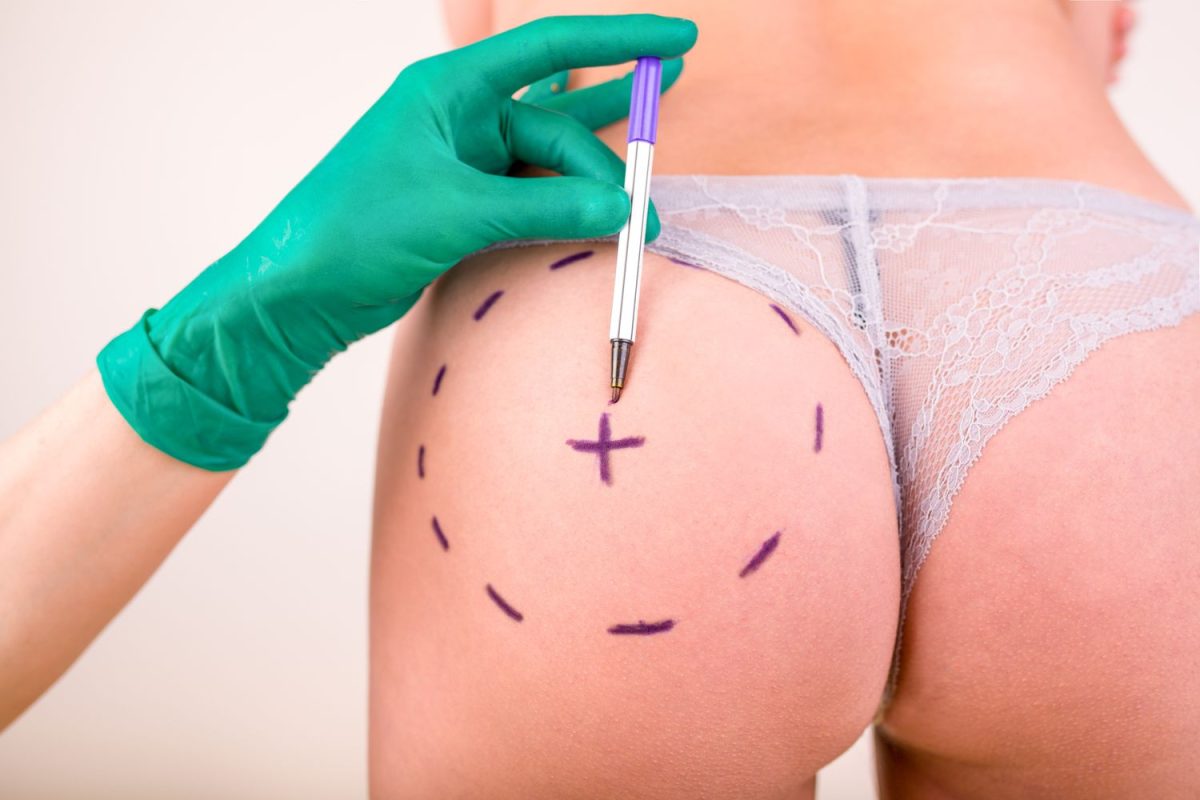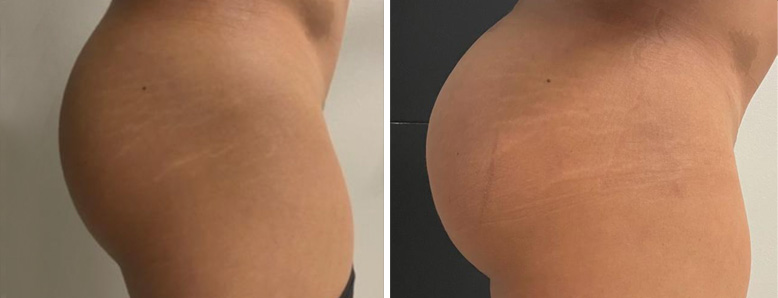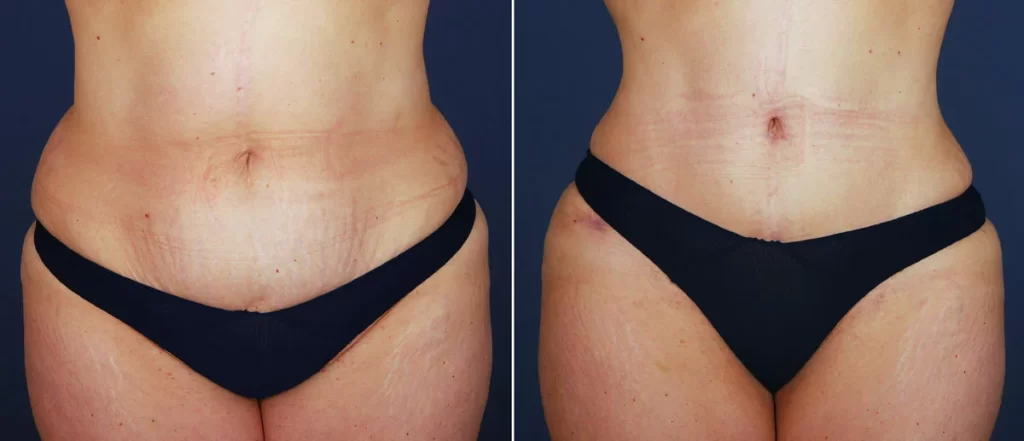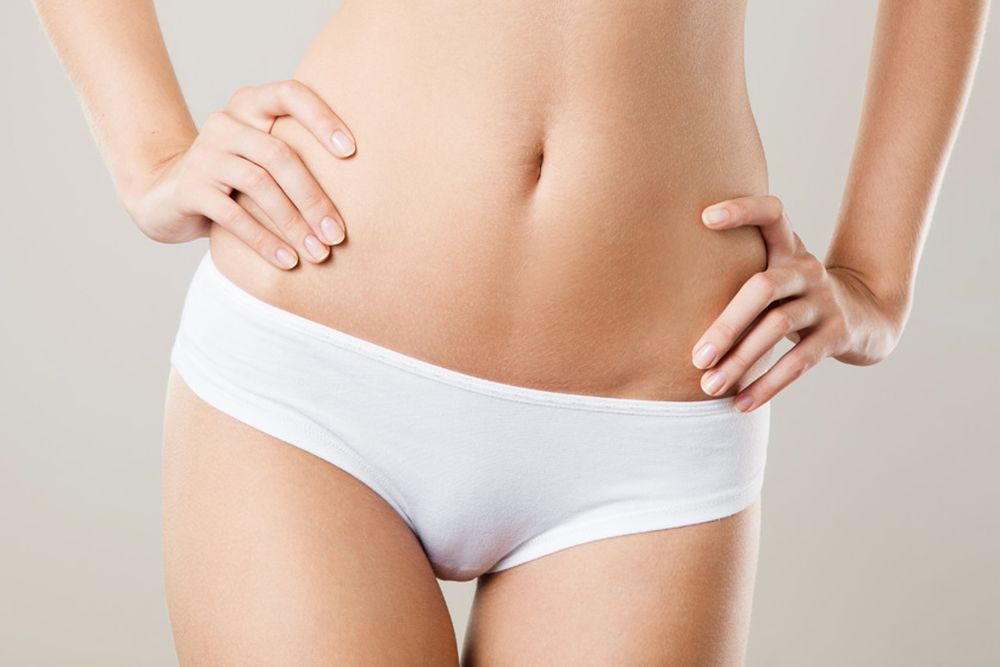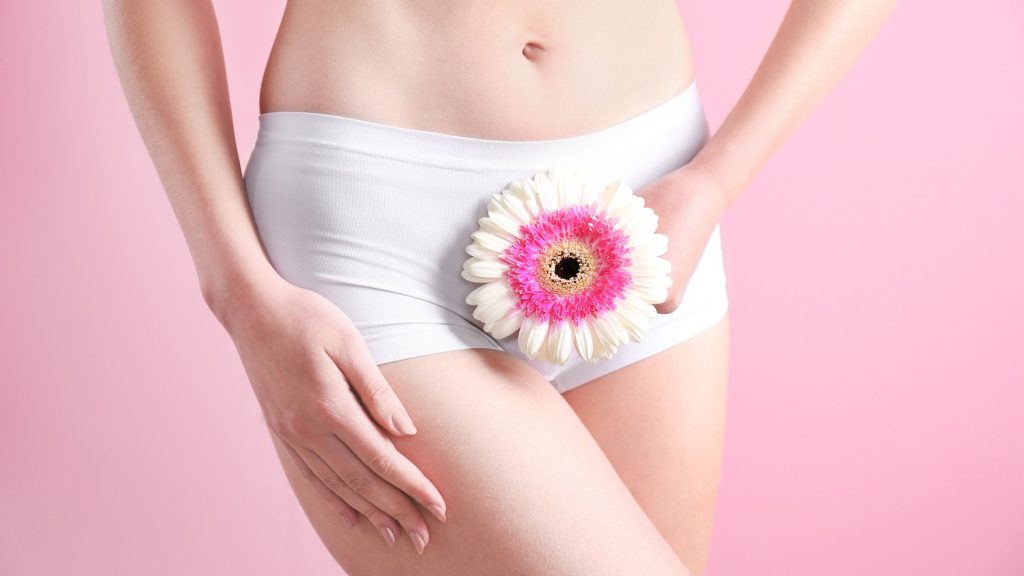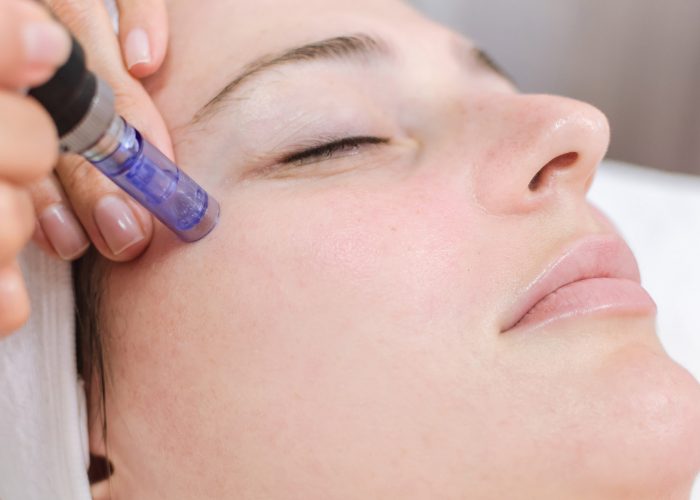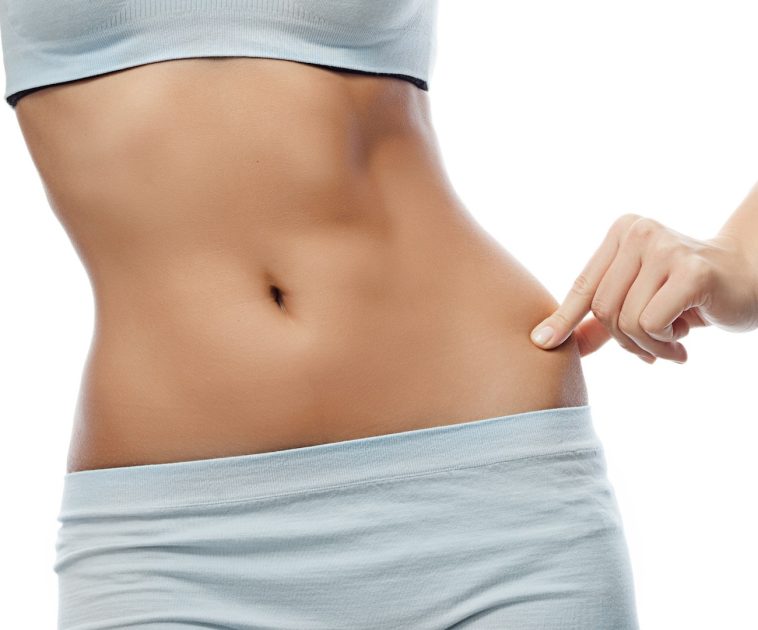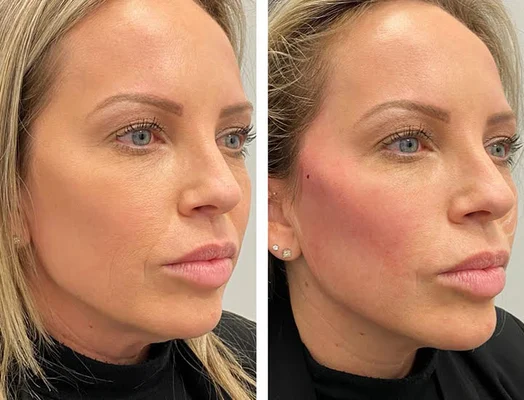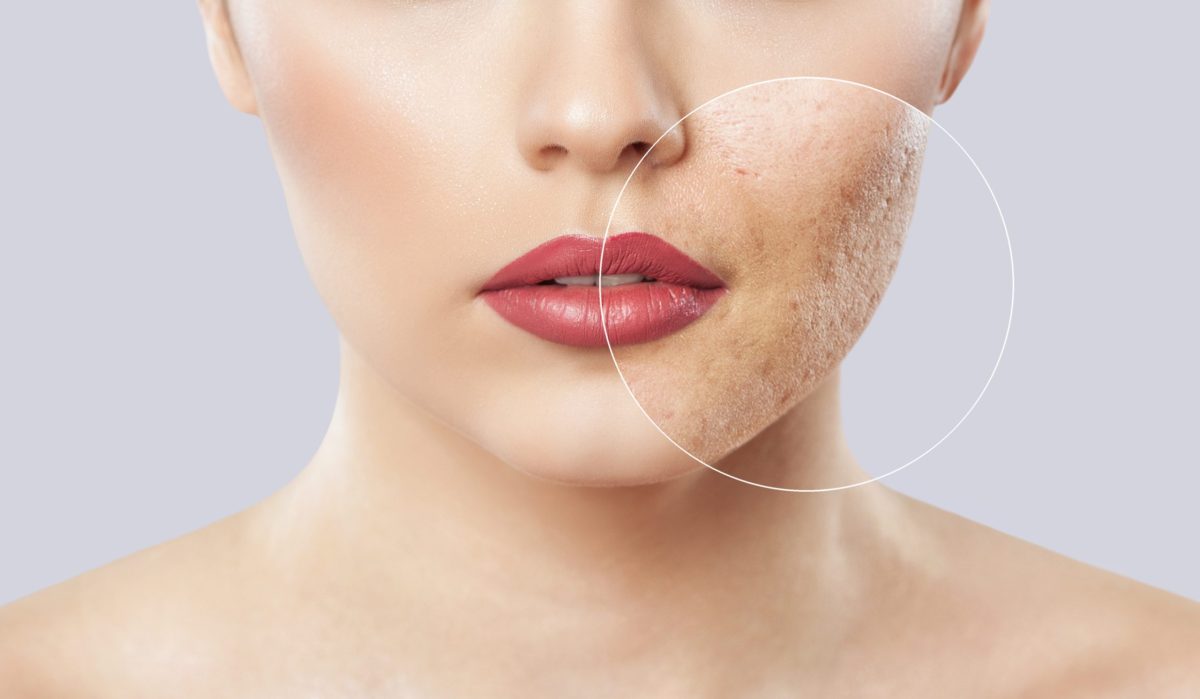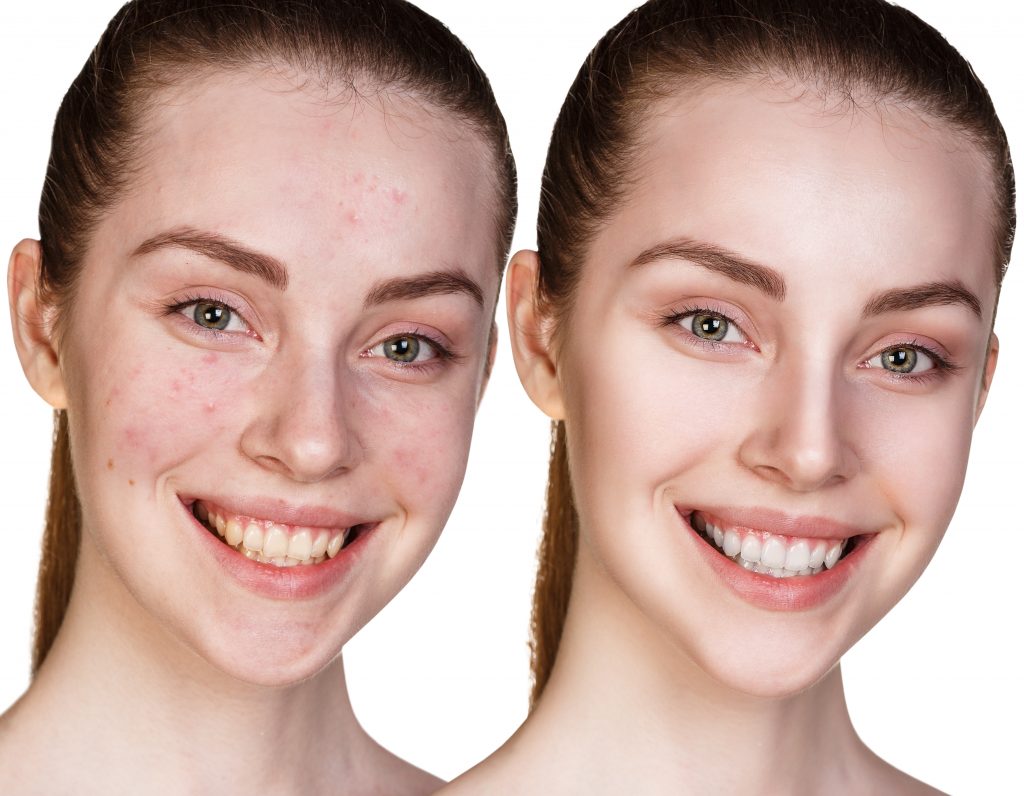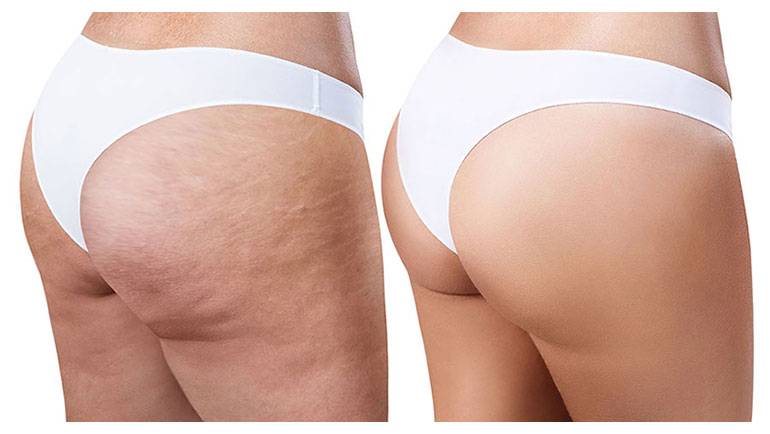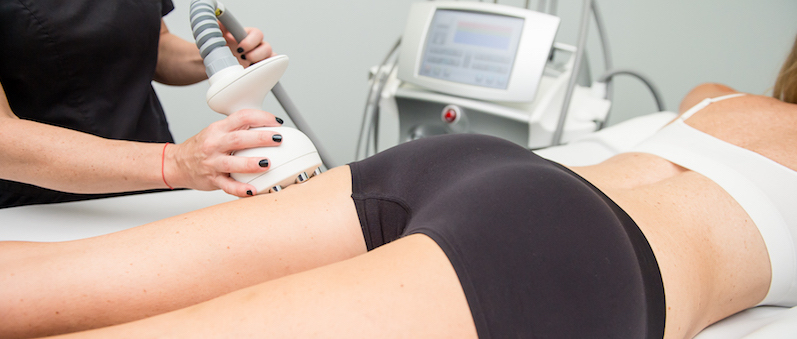Key Takeaways
-
CoolSculpting is a non-invasive fat reduction method that uses freezing technology to target localized fat, offering minimal downtime and no scarring. The results are slow, and you may need several treatments.
-
Liposuction is a surgical procedure that can remove much larger fat volumes all at once, providing immediate results. It has increased recovery time, scarring risk and cost associated with it.
-
CoolSculpting is best for people who have pinchable pockets of fat and want to avoid surgery. Liposuction is more appropriate for patients seeking more extensive fat removal or contouring.
-
Each patient’s recovery experience will be different. After treatment with CoolSculpting, patients experience little to no downtime and return to their routine almost instantly, while liposuction requires weeks of recovery time and careful aftercare.
-
Costs depend on whether you get coolsculpting or liposuction, how many areas you treat and your provider. CoolSculpting overall will end up costing you more because you’ll have to pay for several sessions, but liposuction will cost you more up front.
-
The most important factor by far is to choose the right provider. Whichever one you choose, look for experienced, certified professionals to reduce risks and get the best possible results.
CoolSculpting and liposuction represent two great ways to reduce stubborn fat, though one is non-invasive and the other is surgical. CoolSculpting uses non-invasive technology to freeze fat cells and remove them over time. This ultra-specific touch technique is ideal for anyone looking for a less aggressive approach with no downtime.
On the other hand, liposuction is an invasive surgical procedure that actively removes fat. So why choose this invasive treatment when this approach often achieves the same results instantly and much more dramatically?
Choosing between the two ultimately comes down to recovery time, cost, and your individual goals. When you stack their advantages and disadvantages against each other, it becomes easier to determine which treatment is the best match for your lifestyle and treatment goals.
In the sections below, I’ll break down some of the most important differences. Informed decisions will give you the best results for your body and your unique needs.
CoolSculpting vs. Liposuction: What Are the Differences?
If you’re interested in fat freezing techniques like CoolSculpting vs. traditional liposuction, knowing the difference between these fat reduction procedures is key to choosing the right treatment option for your needs. Both methods aim to reduce body fat, but they differ significantly in procedure, recovery, and overall results.
1. Understand CoolSculpting Procedure
CoolSculpting, also known as cryolipolysis, is a non-invasive fat freezing treatment that effectively targets stubborn body fat. This body contouring procedure utilizes a device that suctions the extra skin while cooling the fat tissue to a precise temperature, allowing the fat cells to crystallize without harming nearby tissues.
Individual sessions typically take no more than 35 to 60 minutes. Throughout this cycle, patients feel little to no discomfort, other than a cooling sensation and some light tugging.
Once the fat cells are frozen, the body gradually eliminates them through its lymphatic system, making this fat reduction procedure cumulative. Full results can take 1-3 months to manifest, with noticeable changes typically appearing around 8 weeks.
CoolSculpting is particularly effective for smaller areas with stubborn fat pockets, such as the love handles or subcutaneous fat in the chin area.
2. Understand Liposuction Procedure
Liposuction is a surgical procedure requiring anesthesia. Tumescent liposuction is the most common type and the type you will want to avoid.
The length of the surgery depends on the specific procedure but generally takes about 2-3 hours depending on the size of the treatment area. After recovery, which includes many weeks of swelling and bruising, these symptoms will disappear.
In contrast, liposuction can remove about 90% of fat in just one session. It works best when targeting larger areas such as the abdomen or thighs, producing dramatic and immediate results.
CoolSculpting: Pros and Cons
As a non-surgical fat reduction procedure, CoolSculpting has gained popularity for its effective ways to target belly fat and other areas like the inner thighs, offering a unique treatment option with distinct benefits and drawbacks.
Pros: Non-Invasive Advantages
One of the biggest things that makes CoolSculpting unique is that it’s completely non-invasive. This is because this procedure doesn’t require any incisions, needles, or anesthesia. That’s what makes it a preferable option for anyone looking to avoid the dangers of surgery.
During a session, patients typically experience little to no pain. Patients typically characterize this new sensation as primarily cold with slight pulling or pinching in the area being treated. Such an approach naturally attracts beauty seekers who put a premium on safety and want to take a more subtle, gentler hand at addressing lifer fatty deposits.
Pros: Minimal Downtime
Post-treatment, CoolSculpting patients can expect to resume daily activities right away—including returning to work within the same day. In contrast to liposuction, which involves weeks of recovery, CoolSculpting’s low downtime is a huge attraction—perfect for those with hectic lifestyles.
This swift transition back to normal activities greatly increases patient satisfaction, particularly for those who must juggle family and career obligations.
Pros: Reduced Risk of Scarring
On the side of visible scars, since CoolSculpting is non-invasive and requires no surgical cuts, this risk is eliminated. To patients who do aesthetic work, this lack of scarring represents a huge benefit of CoolSculpting over liposuction.
Others love this feature when looking for subtle body contouring results.
Cons: Gradual Results
One key drawback of fat freezing procedures is the gradual timeline for visible results, which can take up to three weeks to begin showing and several months for full effects. Though many welcome the gradual change, some patients desire faster results, similar to traditional liposuction.
Liposuction: Pros and Cons
Among surgical procedures, liposuction techniques are unique in their ability to safely remove and shape large deposits of fat, making it one of the most effective fat reduction procedures available. It’s no surprise, then, that this body contour treatment option has skyrocketed in popularity, with the American Society of Plastic Surgeons (ASPS) recording more than 235,000 procedures done in 2016.
Pros: Significant Fat Reduction
Liposuction is better for those looking to remove larger fat deposits than non-invasive liposuction. With this targeted approach, fat cells are permanently removed by 25% in each area treated. It’s great for those patients who want to achieve dramatic body contouring results.
Unlike CoolSculpting which is restricted to more superficial fat layers, liposuction’s ability to reach deeper and thicker fat deposits provides more striking, defined contour. This level of fat removal is frequently life-changing, increasing patients’ self-esteem and allowing them to feel better in their own skin.
Pros: Immediate Results
Perhaps one of its best benefits is the instant gratification, quite literally with visible results. Although swelling and bruising are expected after surgery, a general improvement in contour can often be seen just days later.
Because liposuction provides immediate results, it can enhance satisfaction and self-esteem right away. That’s because, unlike liposuction, which removes fat in one day, CoolSculpting eliminates fat gradually.
Pros: Single Procedure Option
Liposuction is usually done in a single session as the final result is needed. This efficiency is especially attractive to patients with hectic lifestyles, as it significantly shortens treatment time.
Real results – Cryolipolysis tends to necessitate several CoolSculpting appointments before seeing ideal results. In comparison, liposuction offers a single, definitive solution with most patients returning to work in one week.
Cons: Surgical Risks
While minimally invasive, liposuction procedures still involve surgical treatment risks, including infection or complications during the healing process. Choosing an experienced plastic surgeon and stopping tobacco use prior to and following the fat reduction procedure are key to reducing these potential risks.
Cons: Longer Recovery Time
Recovery from liposuction usually takes longer than non-invasive options. Most people are back to at least light activities within days.
Full recovery can take weeks, affecting daily routines and requiring advanced planning.
Cons: Potential Scarring
Because liposuction procedures are performed through small incisions, some scarring is inevitable; however, the scars are usually minimal. With careful incision care and adherence to post-operative instructions, visible scarring from this fat removal method can be minimized in the long-term.
Cons: Higher Cost
First, liposuction is vastly more expensive than CoolSculpting. Surgeons’ skill and experience, along with the number of areas being treated all play into the costs.
It’s really important to weigh these financial elements when deciding.
Ideal Candidates: CoolSculpting
CoolSculpting is an FDA-cleared, non-invasive fat freezing treatment that’s perfect for people looking to eliminate stubborn belly fat in those annoying trouble spots. While it offers a convenient option for body contouring, understanding who benefits most from this fat reduction procedure is essential for achieving satisfying results.
Best Body Types for CoolSculpting
CoolSculpting works best for adults within 30% of their ideal weight who maintain good muscle tone and firm, elastic skin. This treatment is perfect for any person struggling with stubborn areas of fat.
Whether you’re dealing with love handles, a pesky double-chin or tummy troubles that just won’t respond to diet and exercise—CoolSculpting is the perfect answer!
CoolSculpting was not made for drastic fat loss like conventional weight-loss treatments. Rather, it’s ideal for sculpting those pockets of fat that are just genetically predisposed to stick around.
For instance, an individual with very healthy lifestyle habits but stubborn fat deposits around the thighs might find great relief. A healthy baseline weight is important because this is what helps the other fat cells behave the way we expect them to when we begin cooling them.
Realistic Expectations for CoolSculpting
Realistic expectations and a willingness to wait are key. CoolSculpting provides noticeable, natural-looking results without the downtime.
You’ll gradually notice results over the next few weeks to months as your body naturally eliminates the treated fat cells. Individual results may vary, being affected by factors like metabolism and lifestyle.
Having direct, honest discussions with providers is key to establishing realistic goals. Another candidate could lose significant fat throughout their training. This loss will not be on par with the more drastic outcomes seen through surgical interventions such as liposuction.
Who Should Avoid CoolSculpting?
Other factors, like skin elasticity, smoking, or recent weight loss, can increase or decrease the likelihood of a successful procedure.
Consulting a provider can help you determine whether the treatment is safe and suitable for you.
Ideal Candidates: Liposuction
Liposuction is a trusted fat removal method for those aiming to eliminate stubborn pockets of belly fat. It’s not a cookie cutter procedure, and understanding who benefits most from this fat reduction procedure is key. This section discusses the ideal candidates and what makes someone a great fit for this surgical treatment.
Best Body Types for Liposuction
Liposuction is most ideal for those who have stubborn deposits of fat in areas such as the abdomen, thighs, arms or back. Those with an overall proportionate body but stubborn fat pockets that resist diet and exercise often see the most noticeable results.
For instance, an otherwise healthy person at a stable weight with stubborn pockets of “love handles” can get the procedure to enhance their shape. It’s crucial to instill realistic expectations—we’re contouring with liposuction, not removing fat to cause weight loss.
Realistic Expectations for Liposuction
Knowing the procedure’s limitations is essential. You’ll notice the difference instantly. While swelling may postpone the ultimate results, these can take months or a year to completely manifest.
Recovery time differs from person to person—with some patients going back to work in just a few days, while others require additional recuperation. Staying away from strenuous activities for at least four weeks allows your body to heal appropriately.
Having open conversations with your surgeon goes a long way in setting realistic expectations and avoiding surprises after your surgery.
Who Should Avoid Liposuction?
Patients with a history of poor wound healing, uncontrolled diabetes, or significant nicotine use are at higher risk for complications. Since tobacco can lengthen recovery time drastically, quitting a minimum of four weeks prior to surgery is critical.
Those who are severely obese may find even greater success by attempting lifestyle changes or undergoing bariatric surgery first. A comprehensive in-person evaluation is key to a safe and successful procedure.
Recovery and Downtime Comparison
Here’s what you should know about the recovery process for CoolSculpting, a popular fat freezing technique, vs liposuction, a traditional fat removal method, to make a smart choice.
|
Procedure |
Recovery Timeline |
Downtime |
|---|---|---|
|
CoolSculpting |
Up to 2 weeks for swelling |
Little to none |
|
Liposuction |
Several weeks to months |
Requires rest period |
CoolSculpting Recovery Timeline
As a non-invasive procedure, CoolSculpting is famous for its lack of downtime. Patients are able to go back to work or normal routine the next day.
Although swelling or bruising can last up to two weeks, these side effects are minor and easy to maintain. Staying on top of post-treatment care, such as light massage to improve results, is important.
Improvements are subtle and progressive, with the most noticeable results appearing over several weeks as the body naturally processes and eliminates the treated fat cells.
Liposuction Recovery Timeline
Liposuction recovery is much more involved. Most patients are back to light activity within a week.
Complete recovery can take several weeks to months. Swelling, bruising, and loss of sensation are common and subside over time.
Activities that require you to have a body, like kickboxing, can be put off for six weeks or more. By following all post-op instructions, like the usage of compression garments, patients will improve their healing process and final results.
Managing Pain and Discomfort
CoolSculpting is a non-invasive procedure with mild discomfort and can be easily treated with over-the-counter pain relievers.
Since liposuction is surgical, there will likely be a prescribed pain medication to help with soreness. Pain is subjective, determined by pain threshold and tolerance.
Adherence to provider recommendations, as well as follow-up appointments, play key roles in controlling post-operative pain.
Cost and Financial Considerations
Whether you’re choosing CoolSculpting for fat freezing or traditional liposuction for effective fat reduction procedures, understanding the cost is crucial. Both treatment options vary significantly in price, influenced by factors such as the treatment area, provider, and the number of sessions needed. Here’s a detailed comparison to help you decide which is best for your body contour needs.
|
Procedure |
Average Starting Cost |
Typical Range |
|---|---|---|
|
CoolSculpting |
$800 |
$2,000–$4,000 per area |
|
Liposuction |
$4,500 |
$3,500–$7,500 per area |
CoolSculpting Cost Breakdown
CoolSculpting tends to be more cost effective on the front end. A single session might start at $800, but that price goes up based on the size and the number of treatment areas.
Another example would be sculpting a small Aesthetic Zone, such as the chin area, which would be less expensive than the larger zones such as the abdomen. Provider choice and geographic area are driving factors in pricing.

What’s not usually explained, though, is that to get the results you’re hoping for often takes several sessions, potentially adding up to high costs very quickly.
Liposuction Cost Breakdown
That’s because liposuction is a surgical procedure with a higher up-front cost, typically beginning at $4,500. This is on top of anesthesia, surgeon fees, and post-operative care.
Cost can change depending on geographic area and the experience of the surgeon. Liposuction typically delivers dramatic results after just one treatment.
Though it takes a bigger investment upfront, it can be more cost-effective for addressing bigger areas or multiple locations at once.
Insurance Coverage Options
Cosmetic procedures such as these are not typically covered by insurance. Exceptions are allowed when the procedure is focused on treating medical issues, so ask your provider.
If insurance is not a feasible route to pursue, make financing or payment plan options part of your budgeting.
Financing Options
Both procedures can be financed with options, such as a monthly payment plan. These cost artificial barriers allow for the treatments to be available without their high upfront costs.
Always compare interest rates to choose the most cost-effective option.
Risks and Potential Complications
Whether it is the risks and possible complications of a surgical procedure or a new medicine, knowing these helps you make informed choices. Both CoolSculpting and liposuction involve their own unique set of risks. These potential complications vary depending on your individual health as well as the expertise of your provider.
Here’s a quick rundown of what you should know.
|
Risk |
CoolSculpting |
Liposuction |
|---|---|---|
|
Common Side Effects |
Redness, swelling, bruising, mild discomfort |
Swelling, bruising, numbness, soreness |
|
Rare Complications |
Paradoxical adipose hyperplasia (extremely rare) |
Infection, blood clots, fat embolism |
|
Recovery Time |
Minimal, no downtime |
Several days to weeks, depending on procedure |
CoolSculpting Risks and Side Effects
CoolSculpting provides a low-risk, noninvasive option to enhance your body contours. You may have minor side effects including redness, swelling or bruising that typically go away within days. Other patients experience transient numbness or pain on treatment and subsequently.
Rarely, a condition called paradoxical adipose hyperplasia (PAH) develops, in which fat cells that have been treated actually enlarge instead of shrink. This side effect is extremely rare. Among other things, it underscores the importance of tracking atypical trends and selecting providers with the qualifications and ability to identify risks.
Liposuction Risks and Complications
As a surgical procedure, liposuction comes with some complications. Swelling, bruising, and numbness are typical effects and gradually go away over the course of several weeks or months. Rare complications such as infection, blood clots, or fat embolism with serious consequences can happen.
Because tobacco use significantly raises these risks, nicotine should be avoided before and after surgery. Individual health factors, including preexisting conditions, further complicate outcomes, making consultations with experienced, board-certified surgeons all the more critical.
Minimizing Risks: Choosing a Provider
No matter the procedure, what’s most important is selecting a qualified provider to minimize risks and potential complications. This means that board certification guarantees a physician’s training, quality care and safety standards.
These consultations help providers evaluate risks and find suitable candidates. Taking the time to browse through reviews and qualifications goes a long way to ensuring a safe and ultimately successful experience.
Results and Effectiveness
When choosing between CoolSculpting and liposuction procedures, understanding how each fat reduction procedure works to produce impressive, lasting results is essential. Both methods are clinically proven to reduce belly fat and serve different unique needs, making your choice of body contour treatment a personal one based on your aesthetic goals.
CoolSculpting: Expected Outcomes
CoolSculpting is a non-invasive, gradual treatment that freezes unwanted fat cells, allowing your body to naturally flush them out over time. Depending on the size of the treated area, you can begin to notice immediate results within three weeks.
The most evident effects usually show up in the first month to three months. A systematic review and meta-analysis of RF studies found an average 21.6% reduction in fat layer thickness within 30 days of treatment. The results, the subtle and gradual hormonal changes, vary widely based on each person’s body type and metabolism.
It’s worth mentioning that results on CoolSculpting are usually achieved after a series of sessions, not in just one. This nonsurgical procedure is non-invasive and entails minimal to no downtime. It’s important to manage expectations, as it is a gradual process that is most effective for people looking for modest fat loss.
Liposuction: Expected Outcomes
Liposuction provides rapid and dramatic results. After surgery, patients immediately see a marked decrease in swell and an improved shape to their body within just a few days. It takes a little time to determine final results, usually one to three months, as the natural swelling diminishes.
The vast majority of individuals are able to get the look they want with one treatment. A 2020 survey found that 85.7% of patients still recommend it, even years after the procedure. Post-operative care, such as wearing compression garments and adhering to recovery guidelines, serves as key factors in keeping its transformative effects intact.
Maintaining Results Long-Term
Just like with the above two treatments, a healthy diet and regular exercise are key to maintaining results with both of these procedures. While neither stops the formation of new fat deposits, making healthy lifestyle choices can lead to lifelong rewards.
Surgery may give you a new form. Lifestyle decisions really determine how long that shape lasts.
Patient Satisfaction and Quality of Life
With CoolSculpting and liposuction, each offers distinct advantages for achieving your body contouring goals. Each approach can have positive or negative impacts on your satisfaction and quality of life. Understanding these differences equips you to make a more informed decision.
Select the most appropriate procedure to achieve your goals and expectations.
CoolSculpting: Patient Experiences
Patients love CoolSculpting because it’s a non-invasive procedure with little to no downtime. In fact, most patients report feeling very comfortable throughout the process, which uses controlled cooling technology to crystalize fat cells.
Now, in as few as two to three sessions—each about an hour long—patients are able to see impressive outcomes. They can look forward to 20%-25% elimination of fat cells in treated areas.
This gradual approach gives the body a chance to adapt organically—a jumpstart many find attractive. The gradual process of results can take some getting used to, since clear improvements may not be seen for at least a few weeks.
Patients who have realistic expectations are often more satisfied, because they appreciate the gradual nature of results.
Liposuction: Patient Experiences
Liposuction provides instantaneous results, and few patients do not enjoy witnessing this immediate change. Those new cells weren’t there before — the procedure directly removes fat cells.
Though your body won’t be completely settled into its final shape for several months, immediately after surgery you will notice dramatic, visible differences.
Patient Testimonials
Testimonials often highlight the importance of adequate post-operative care. To achieve the best possible results, patients will be required to restrict physical activity for at least four weeks.
Long-term satisfaction depends on adherence to a healthy lifestyle, and the results can vary with regained or lost weight. Because recovery experiences are so diverse, creating personalized care plans is critical.
Psychological Factors to Consider
While accomplishing body contouring goals can significantly enhance one’s confidence and self-image, mental preparedness is most important. By opening a dialogue about your emotional expectations with your provider, you can better address body image issues.
This kind of open communication lays the groundwork for a successful collaboration.
Physician Recommendations and Criteria
When determining whether to use CoolSculpting or liposuction, physicians take into account several patient-specific factors. Your unique medical history, lifestyle, and goals for treatment usually inform their recommendations.
A patient who prioritizes having minimal downtime should choose CoolSculpting. This non-surgical, non-invasive procedure has no downtime. If you’re interested in more noticeable fat loss, liposuction might be the right treatment for you.
Factors Influencing Procedure Choice
Your aesthetic or treatment goals will always weigh heavily on which plausible procedure is appropriate. While CoolSculpting reduces targeted pockets of fat for subtle sculpting, more extensive fat removal would be achieved with liposuction.
Body type plays a role as well—patients with more elastic skin may see better results from liposuction, since it is sometimes performed in conjunction with skin-tightening procedures. Financial concerns factor heavily into the decision as well.
Though CoolSculpting appears to be cheaper up front, it usually takes several sessions to see significant improvements.
Consultation Process: What to Expect
In consults, physicians examine your health as a whole and hear what you expect. They’ll review your medical history, including any previous surgeries and known allergies to make sure it’s safe.
These sessions provide a forum for conversation about achievable results, where photos or renderings of designs and treatments may be used to vividly portray what is possible. Creating questions—concerns over pain management, healing time, potential other treatments—armed you with the ability to make healthy choices.
Importance of Qualified Professionals
You’ll want to choose a qualified provider who puts your safety first and produces the best possible results. Board-certified medical professionals lend a wealth of training and experience to aesthetic procedures.
Verifying credentials, checking online reviews, and inquiring about similar past cases will give you added confidence. Remember to always prioritize expertise over convenience when choosing a provider.
Conclusion
Ultimately, the decision between CoolSculpting vs. Liposuction comes down to which option better accommodates your lifestyle, personal goals, and comfort level. Both procedures have their own distinct advantages. CoolSculpting works well for non-invasive fat reduction with minimal downtime, while liposuction provides noticeable and precise results for those ready for a surgical option. Just as each procedure does, so too does each recovery—both in terms of timeline and price. Ultimately, it’s important to think about what’s most important to you and your decision.
Discussing your options with a well-informed, reputable physician will make you feel more secure in whatever choice you make. They can help you determine which procedure is better for you based on your body type, general health and personal expectations. If you’re looking for a fast, easy, non-invasive procedure—that’s the one. If you decide you need something more substantial, though, do your research and ensure you’re choosing the right option for your situation. Consider your options, ask questions, and choose what works best for you.
Frequently Asked Questions
What is the main difference between CoolSculpting and liposuction?
Though both procedures are effective fat reduction procedures, CoolSculpting is a non-surgical fat freezing method, while liposuction is a surgical treatment for fat removal. With no downtime required, CoolSculpting offers a less invasive alternative, whereas traditional liposuction allows plastic surgeons to remove larger volumes of fat in a single session.
Which option has a shorter recovery time?
With CoolSculpting, a popular fat freezing technique, there’s minimal recovery time involved, allowing you to return to your regular routine immediately. In contrast, traditional liposuction procedures usually require weeks of recovery due to significant swelling and bruising during the healing process.
Is CoolSculpting or liposuction more cost-effective?
CoolSculpting is a less expensive fat reduction procedure than traditional liposuction. The average cost of one CoolSculpting session ranges from $2,000 to $4,000, while liposuction procedures typically run between $3,000 and $10,000 depending on the treatment area and surgeon.
Are results from CoolSculpting permanent?
Yes, CoolSculpting, a popular fat freezing procedure, permanently removes targeted fat cells. To maintain your results, commitment to a healthful diet and consistent exercise is essential, as new fat cells may develop with weight gain.
Who is a good candidate for liposuction?
Liposuction works best for people who are generally healthy, of normal weight with localized fat deposits and skin elasticity. This fat reduction procedure isn’t a solution for general weight-loss but is an effective way to contour certain parts of the body.
What are the risks of CoolSculpting?
Common risks associated with fat freezing procedures include mild, temporary redness, swelling, bruising, firmness, or numbness in the treatment area. Very rarely, you might experience paradoxical adipose hyperplasia (PAH), where the subcutaneous fat expands instead of being eliminated.
How do results from liposuction compare to CoolSculpting?
Liposuction procedures provide much more impressive and instant results, particularly for larger treatment areas like the belly and thighs. In contrast, CoolSculpting offers gradual fat reduction over three months, making it an effective nonsurgical treatment option for patients seeking subtle changes.






